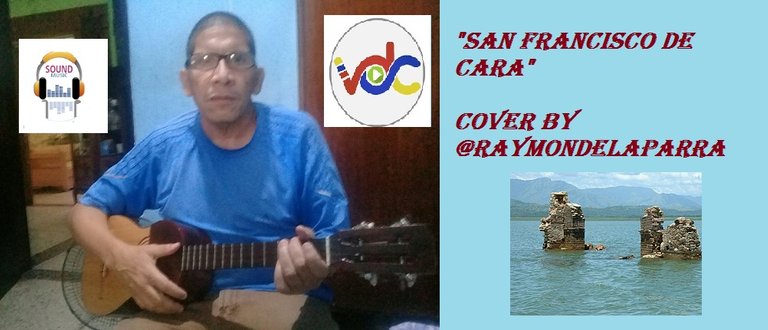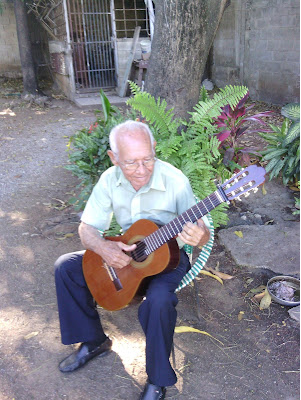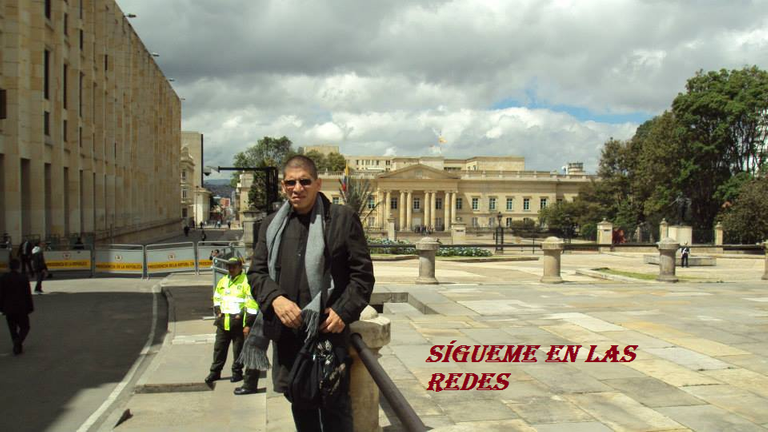
Fuente de la foto de las ruinas de San Francisco de Cara
Hola, comunidad, hoy les traigo una canción que habla de un pueblo desaparecido, quizá podríamos llamarlo "un pueblo fantasma".
“San Francisco deCara”, un pueblo del estado Aragua en Venezuela que dejó de existir para dar paso a una represa: La Represa de Camatagua. Cuando hay mucha sequía y baja el nivel de las aguas asoma la cúpula de la iglesia y es un espectáculo triste como triste fue el que los habitantes de larga edad de San Francisco de Cara, al ser desplazados a otro espacio cercano no pudieron acostumbrarse a la pérdida de su pueblo, de sus recuerdos y fueron muriendo de tristeza uno a uno.
San Francisco de Cara había sido fundado en 1696 con el impulso de fray Ildefonso Zaragoza y le tocó desaparecer en 1967 y aunque sus pobladores fueron desplazados a solo 24 kilómetros de su ancestral pasaje el sufrimiento originado por la separación del terruño natal y verlo luego desaparecer bajo las aguas fue mucho.

Hello community, today I bring you a song that talks about a disappeared town, maybe we could call it "a ghost town".
“San Francisco de Cara”, a town in the Aragua state in Venezuela that ceased to exist to make way for a dam: The Camatagua Dam. When there is a lot of drought and the water level drops, the dome of the church appears and it is a sad spectacle, as sad as it was that the old inhabitants of San Francisco de Cara, being displaced to another nearby space, could not get used to the loss of their town, of their memories and they were dying of sadness one by one.
San Francisco de Cara had been founded in 1696 with the impulse of Fray Ildefonso Zaragoza and had to disappear in 1967 and although its inhabitants were displaced just 24 kilometers from their ancestral passage, the suffering caused by the separation from the homeland and seeing it later disappear under the waters was a lot.
El vals que interpreto fue compuesto por Esteban Nieves, prolífico y talentoso compositor oriundo de Villa de Cura, estado Aragua, Venezuela.
En el mismo resuenan los nombres de personas que hicieron vida en y dieron vida a San Francisco de Cara, pueblo ahora sumergido y del que permanecen a la vista como testigo mudo del ayer solo el campanario de la iglesia.
Sin embargo, como citamos antes, en épocas de mucha sequía se pueden divisar otras ruinas del pueblo y las mismas suelen ser visitadas por turistas y por nostálgicos habitantes del antiguo pueblo.

The waltz that I interpret was composed by Esteban Nieves, a prolific and talented composer from Villa de Cura, Aragua state, Venezuela. In it resound the names of people who lived in and gave life to San Francisco de Cara, a town now submerged and of which only the bell tower of the church remains in sight as a silent witness of yesterday.
However, as we mentioned before, in times of great drought you can see other ruins of the town and they are usually visited by tourists and nostalgic inhabitants of the old town.

Fuente

Fuente
Esteban Nieves nació el 13 de febrero de 1938 en Villa de Cura, pueblo principal de la región que para la época llevaba el nombre de Distrito Zamora, estado Aragua, Venezuela.
Comenzó a tocar guitarra a los 14 años cuando su padre, Don Pascual Nieves, poeta espontáneo, le obsequió una para Navidad
.
Pasó la juventud típica de los jóvenes músicos de la época: exhibiendo su arte como parte del galanteo llevando serenatas a las lindas señoritas de su tiempo.
“Los Tablisónicos”, se llamó el primer conjunto musical que formó Esteban en el barrio Las Tablitas.
Les invito a conocer más sobre Esteban Nieves haciendo clic acá

Esteban Nieves was born on February 13, 1938 in Villa de Cura, the main town in the region that at the time bore the name of Zamora District, Aragua state, Venezuela.
He began playing the guitar at the age of 14 when his father, Don Pascual Nieves, a spontaneous poet, gave him one for Christmas.
.
He spent the typical youth of the young musicians of the time: exhibiting his art as part of the courtship, serenading the pretty ladies of his time.
“Los Tablisónicos” (Woodsonics) was the name of the first musical ensemble formed by Esteban in the Las Tablitas neighborhood.
I invite you to learn more about Esteban Nieves by clicking here
Espero les haya gustado esta canción y su historia.

I hope you liked this song and its story.
😊🥳😁💫🤩



Excelente y muy sentida interpretación, amigo @raymondelaparra, muy interesante la historia detrás de la misma. Muchas gracias por compartir. Mil bendiciones y éxitos para usted.
@sayury, gracias amiga este tema nos muestra la historia del ya desaparecido pueblo San francisco de Cara ,hoy en dia llamado Guanayen.
@tipu curate
Upvoted 👌 (Mana: 21/71) Liquid rewards.
Excelente actuación, amigo @raymondelaparra
Congratulations @raymondelaparra! You have completed the following achievement on the Hive blockchain And have been rewarded with New badge(s)
Your next target is to reach 1250 replies.
You can view your badges on your board and compare yourself to others in the Ranking
If you no longer want to receive notifications, reply to this comment with the word
STOPCheck out our last posts:
Support the HiveBuzz project. Vote for our proposal!
@magdiel gracias por visualizae este contenido de un tema significativo de este autor olvidado
@carmenrivas gracias amiga por haber apreciado el presente material que relata la historia de San Francisco de Cara un pueblo sepultado bajo la represa de Camatagua estado Aragua Venezuela.
@tipu gracias a su espaldo a esta propuesta musical felicito al personal que actua en su plataforma
@hivebuzz gracias al respaldo que siempre le otorgan a los que hacemos vida en esta plataforma saludos